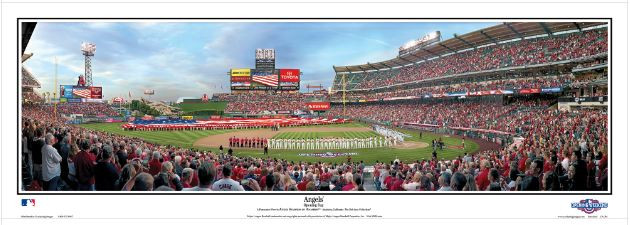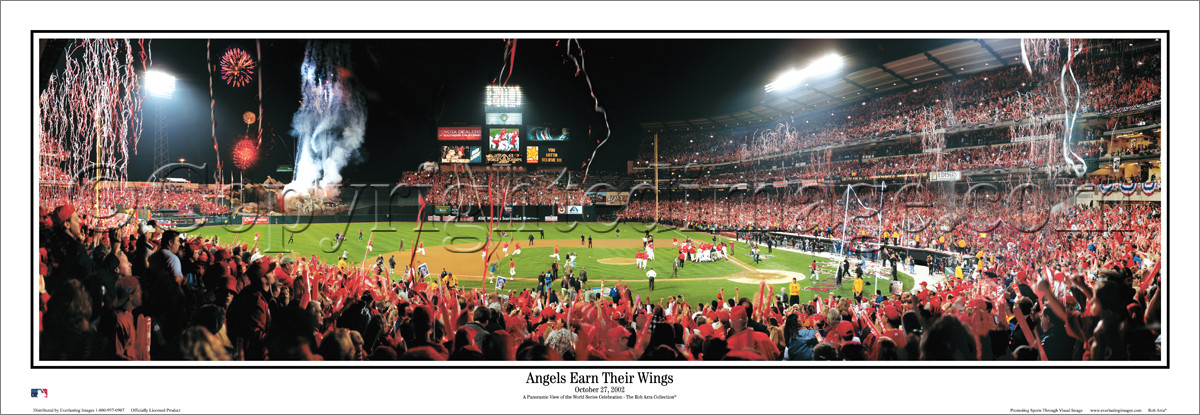Throughout the history of baseball, few stadiums have undergone such dramatic transformations in appearance as Angel Stadium. Since its opening in 1966, the one constant has been the team nickname, the Angels. The franchise began as an expansion team in 1961, playing its inaugural season at Los Angeles’s Wrigley Field while awaiting the construction of a new ballpark. Owned by Gene Autry, the Angels decided to build a new stadium on a 140-acre site in Anaheim, chosen for its proximity to Disneyland and major freeways. Construction of Anaheim Stadium began on August 31, 1964, and the team temporarily relocated to Dodger Stadium for four seasons before moving into their new home.
On April 19, 1966, the Angels played their first game at Anaheim Stadium against the Chicago White Sox. Originally known as the Los Angeles Angels, the team changed its name to the California Angels after relocating to Anaheim. The stadium, with a seating capacity of 43,204, was a three-tier structure with seats stretching from the right-field foul pole to home plate and around to the left-field foul pole. Notably, the ballpark did not feature any seating in the outfield. The most iconic feature of Anaheim Stadium was its 230-foot-tall A-frame scoreboard, which was topped with a giant halo, making the stadium known as the “Big A.” The original dimensions of the park were 333 feet down the left-field line, 404 feet to center field, and 333 feet down the right-field line.
Beyond baseball, Anaheim Stadium hosted a variety of other events, including football. In the 1970s, the Los Angeles Rams (NFL) moved from the Los Angeles Coliseum to Anaheim Stadium, prompting the city to undertake a major expansion. The stadium was fully enclosed, with 23,000 additional seats added, increasing the overall capacity to 65,158. This expansion led to the removal of the “Big A” scoreboard, which was relocated to the parking lot, and the installation of a smaller scoreboard on the roof façade in left field. The stadium also received new executive suites, a football press box atop the upper deck along the third-base line, and an updated sound system. Anaheim Stadium had now become a massive multisport venue, capable of accommodating both baseball and football. The field itself was modified for football, with seating expanded in right field and the gridiron stretching across the infield into left field.
| MEMORABLE MOMENTS AT ANGEL STADIUM |
|
By the 1990s, the Angels, like many other teams, sought a baseball-only facility. No longer interested in a multi-purpose stadium, the team began to explore renovation options or even relocation within Southern California. In January 1994, the Northridge earthquake caused $4 million in damage to the stadium, including the collapse of the 17.5-ton Sony Jumbotron, which crashed into the upper deck and destroyed 800 seats. This event accelerated changes to Anaheim Stadium. After the Rams moved to St. Louis following the 1994 NFL season, Anaheim Stadium became the home of just the Angels, allowing for a reconfiguration back to a baseball-only facility.
In 1996, The Disney Corporation purchased the Angels and agreed to finance 70% of a $100 million renovation. This two-year project, which occurred during the 1996 and 1997 seasons, transformed the stadium inside and out. As parts of the stadium were closed during construction, the seating capacity temporarily dropped to 33,000. The entire project was completed in 1998. The stadium was given a new look and was renamed Edison International Field following a naming rights deal with Edison International Power. In conjunction with the renaming, the team changed its name from the California Angels to the Anaheim Angels.
The renovation included the removal of the 20,000 outfield seats, replaced by a single tier of seating in both left and right field. A new video scoreboard was installed, and the California Spectacular was added in left-center field. The Spectacular featured geysers, a cascading stream, and a mountainside with real trees and artificial rocks. The seating was upgraded to green seats throughout the stadium, and the total seating capacity increased to 45,113. The stadium’s exterior was also renovated, with the concrete structure and ramps painted green, and a gathering plaza with two large Angel hats created outside the ballpark. The renovation also introduced new amenities, including club restaurants, themed sports bars, and fan gathering areas.
Since the renovation in the late 1990s, Angel Stadium has changed very little. After the 2003 season, the Edison International naming rights deal ended, and the stadium was officially renamed Angel Stadium of Anaheim. In 2005, the Angels reverted to their original name, the Los Angeles Angels. Before the 2018 season, the Angels upgraded the video boards, replacing the existing ones with new, larger displays. The 9,500-square-foot video board in right field and 5,488-square-foot video board in left field were installed, significantly enhancing the fan experience.
Today, Angel Stadium has the look and feel of many other retro-style ballparks built in the last 20 years. It is now the second-oldest ballpark in the American League and the fourth-oldest in Major League Baseball. In 2020, the Angels unveiled long-term plans to remain in Anaheim, which include a potential massive renovation project to the stadium. These plans also involve the redevelopment of the parking lots surrounding the stadium to include a mix of housing, entertainment, and commercial shops, ensuring that Angel Stadium remains a central part of Anaheim’s sports and entertainment landscape for years to come. As of 2025, there has been no progress on this project.

























